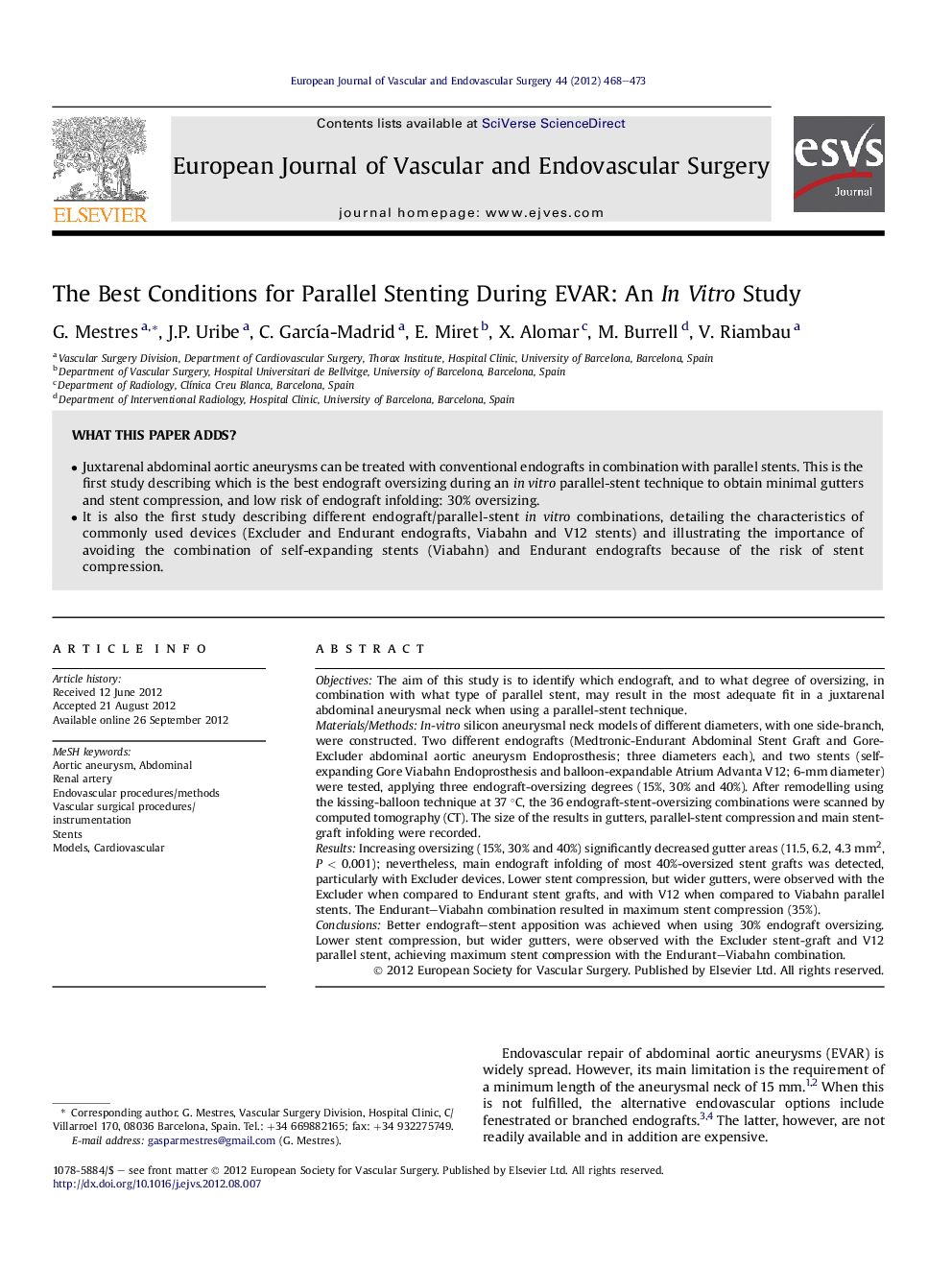| Article ID | Journal | Published Year | Pages | File Type |
|---|---|---|---|---|
| 2912117 | European Journal of Vascular and Endovascular Surgery | 2012 | 6 Pages |
ObjectivesThe aim of this study is to identify which endograft, and to what degree of oversizing, in combination with what type of parallel stent, may result in the most adequate fit in a juxtarenal abdominal aneurysmal neck when using a parallel-stent technique.Materials/MethodsIn-vitro silicon aneurysmal neck models of different diameters, with one side-branch, were constructed. Two different endografts (Medtronic-Endurant Abdominal Stent Graft and Gore-Excluder abdominal aortic aneurysm Endoprosthesis; three diameters each), and two stents (self-expanding Gore Viabahn Endoprosthesis and balloon-expandable Atrium Advanta V12; 6-mm diameter) were tested, applying three endograft-oversizing degrees (15%, 30% and 40%). After remodelling using the kissing-balloon technique at 37 °C, the 36 endograft-stent-oversizing combinations were scanned by computed tomography (CT). The size of the results in gutters, parallel-stent compression and main stent-graft infolding were recorded.ResultsIncreasing oversizing (15%, 30% and 40%) significantly decreased gutter areas (11.5, 6.2, 4.3 mm2, P < 0.001); nevertheless, main endograft infolding of most 40%-oversized stent grafts was detected, particularly with Excluder devices. Lower stent compression, but wider gutters, were observed with the Excluder when compared to Endurant stent grafts, and with V12 when compared to Viabahn parallel stents. The Endurant–Viabahn combination resulted in maximum stent compression (35%).ConclusionsBetter endograft–stent apposition was achieved when using 30% endograft oversizing. Lower stent compression, but wider gutters, were observed with the Excluder stent-graft and V12 parallel stent, achieving maximum stent compression with the Endurant–Viabahn combination.
